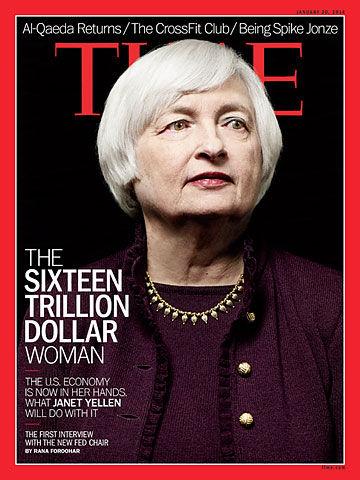
(6 of 7)
Yellen's first and foremost challenge will be overseeing the winding down of the quantitative-easing programs that have functioned as splints on the broken but healing economy. She must make sure that the tapering of asset buying and the movement to "forward guidance"--meaning Fed declarations of longer-term commitments to keeping interest rates low until the economy picks up further--still sustain the recovery if economic vital signs begin to falter. (There's a risk that market interest rates, which the Fed can't completely control, will simply begin to rise and derail things like the housing market, as they did when the Fed first hinted it would taper several months ago.)
Yellen must also figure out how to work with the strong and independent-minded Stanley Fischer, the former Israeli-central-bank chief and World Bank chief economist who will likely take her place as the Fed's vice chair. Assuming she can, many insiders and big-name investors agree with PIMCO CEO Mohamed El-Erian's assessment that the two could be a "dream team." The duo would combine Yellen's collaborative team-building skills with Fischer's deep economic creativity and vision. Says Shafer, the former Treasury Under Secretary: "She's surrounded herself by very bright and powerful men in both her work and her personal life."
She'll have to take on a few more as she struggles to oversee the implementation of several of the Dodd-Frank banking reforms and assesses whether the too-big-to-fail problem is finally behind us. Figuring out how to safety-proof the banking system is one of the challenges that pulled her away from her beloved home in the San Francisco Bay Area (Yellen loves the outdoors and hiking) and back to Washington. Having been on the front lines of the subprime crisis on the West Coast, Yellen is eager to help close the remaining loops on banking reform.
"I felt that the Fed had always been the agency that picked up the pieces when there was a financial crisis, and it was invented to do exactly that," she says. "But we never had as active a program to attempt to assess threats to financial stability as was called for."
Now, as a member of the new Financial Stability Oversight Council, a group created after the crisis, the Fed chair will be looking across industries, sectors and agencies for hidden risk. "I think Dodd-Frank is a good road map and lays out most of the steps that are necessary. But we may also need to take some further steps that have not been taken yet," she says. The Fed has, for example, been advocating higher capital requirements for the country's largest banks, higher even than the new international standards that will likely be mandated by 2018. (The Fed has put out a note asking for comments on just how high they should be.) All this underscores how much more of a proponent of tighter regulation Yellen is than Alan Greenspan or even her immediate predecessor, Bernanke.
